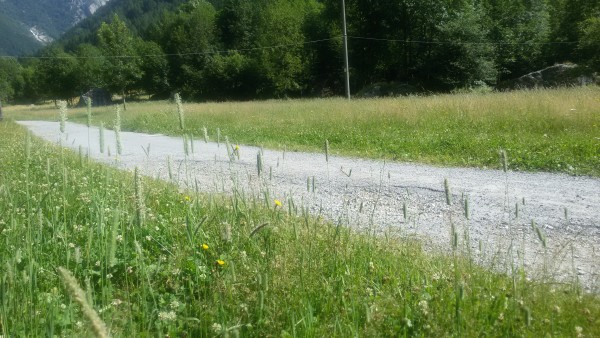
Eat weeds???? You heard right – there’s a rich and satisfying world of nutrition at your feet in your own backyard or in that vacant lot or abandoned field.
Personally, there are few culinary adventures that tickle my fancy more than to walk out of my house and pick some lovely fresh green plants for a morning smoothie, a salad, a soup or a saute. They are free, delicious and make me feel nourished and connected to the earth.
Most wild foods – a less derogatory and more appealing term for edible weeds – are more nutritious than their cultivated relatives. Flavors are often stronger and earthier since they haven’t been bred to appeal to modern palates intoxicated by sweet and bland food.
Lamb’s Quarters aka Wild Spinach or Goosefoot
An analysis of the nutritional composition of today’s featured weed, Lamb’s Quarters , shows that it has amounts of calcium, beta carotene, thiamine, riboflavin, niacin, and phosphorous that blows amounts found in cultivated greens like spinach, kale and chard out of the water! And that’s not even counting all the substantial amounts of phytonutrients, Omega 3 fatty acids, protein, trace minerals and fiber they contain. Traditional cultures have eaten these wild greens going as far back as the Iron Age and they were especially valued in the Spring when they were consumed as a tonic. We eat the seed of a cultivated relative of Lamb’s Quarters – it’s called quinoa. We also eat its close cousins: beets, Swiss chard and spinach among others.
Gathering and Eating Lamb’s Quarters
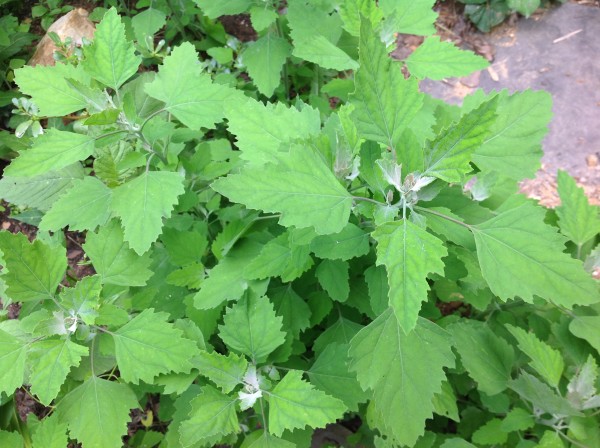
Note the powdery silver new leaves. The undersides of the larger leaves are also silvery white.
To identify Lamb’s Quarters, look for triangular-shaped leaves with silvery white undersides on the leaves. The new leaves will have a dusty appearance as you can see in the photo. The leaves are said to be shaped like goose feet. Plants in mid-summer can be up to 7 feet tall. Usually you’ll find plants that are 3 – 5 feet.
They can be found almost any place where the ground has been disturbed, such as gardens and abandoned lots as well as growing out of sidewalk cracks and along roadsides. Best to harvest them away from the road or on roads infrequently traveled to avoid contamination from traffic.
Wild foods are often at their best in the Spring, but Lamb’s Quarters (aka Goosefoot aka Wild Spinach) can be harvested a plenty in mid-summer. It is like the best spinach you’ve ever eaten, only better – and prepared and eaten in much the same way.
The young leaves can be eaten raw in salads and, if one has the patience, the small seeds can be harvested in the Fall to be eaten like a grain. Go easy when eating the raw leaves since they contain high amounts of oxalic acid, which interferes with the absorption of calcium and can be problematic for some individuals with conditions such as kidney stones or gout. Cooking decreases the quantity of oxalic acid. Oxalic acid is also found in many other foods such as spinach, parsley, Swiss chard, beets, quinoa, buckwheat, chocolate and peanuts.
How to Cook Lamb’s Quarters
Strip off the leaves – the plant on the left below yielded about 8 cups of raw leaves and cooked down to about 2 cups. Like spinach Lamb’s Quarters cooks down substantially. Don’t worry about removing the tiny stems attached to the leaf – they are tender. Wash them in cold water as you would any other greens.
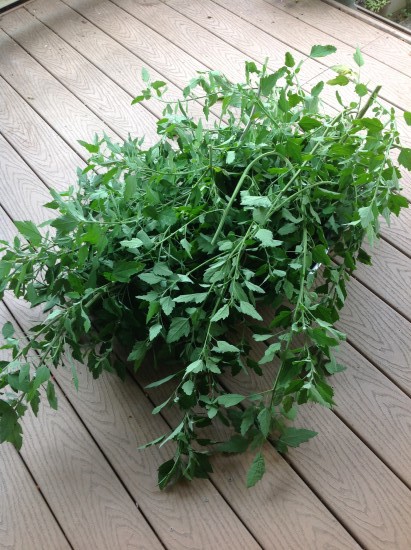
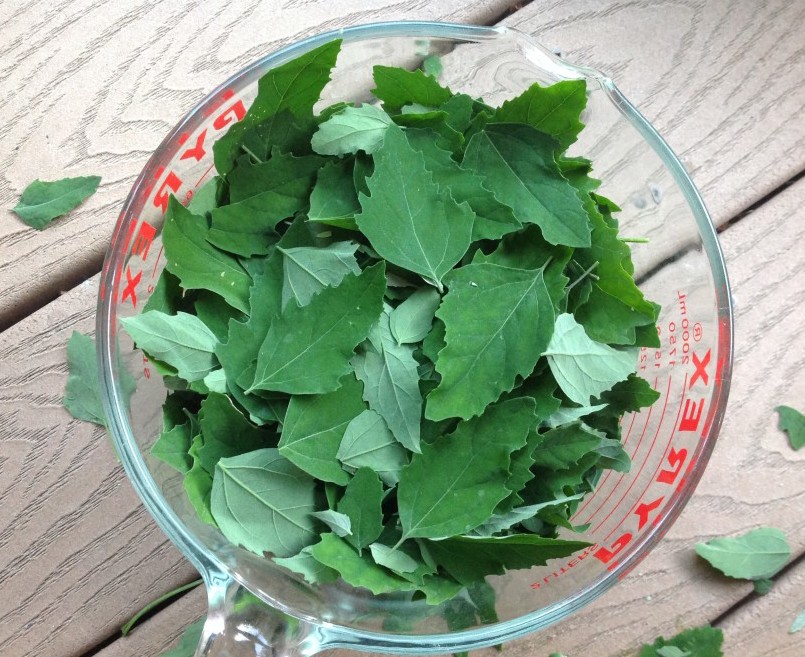
One of the best ways to prepare any wild green is the steam-saute method, taught to me by the inimitable and talented cookbook author and chef, Myra Kornfeld.
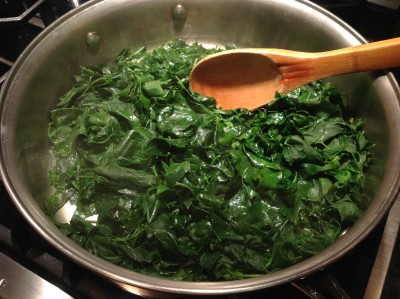
In a large saute pan over medium heat, saute some minced or sliced garlic (2 – 4 cloves depending on your taste) in about 2 Tbs. of olive oil for 30 seconds or until it is slightly softened.
Add in the washed greens with a sprinkling of salt, stirring them occasionally with the garlic, for about 3 – 4 minutes until they turn bright green.
Add in 1/4 cup water and cover, cooking over medium heat for about 15 minutes until the greens are dark and tender and the water has mostly cooked away.
Season to taste with salt and pepper – serve with a fresh squeeze of lemon. Enjoy!
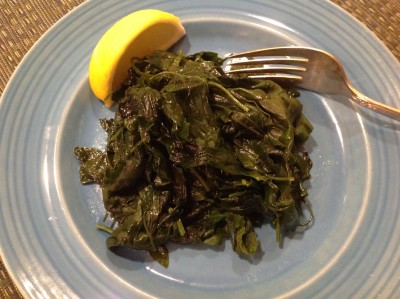
References
Chenopodium album – Wikipedia, the free encyclopedia. (n.d.). Retrieved July 24, 2015, from https://en.wikipedia.org/wiki/Chenopodium_album
Duke, J. A. (1992). Handbook of biologically active phytochemicals and their activities. Boca Raton, FL: CRC Press.
Guerrero, J. L. G., & Torija Isasa, M. E. (1997). Nutritional composition of leaves of Chenopodium species (C. album L., C. murale L. and C. opulifolium Shraeder). International Journal of Food Sciences and Nutrition, 48(5), 321–327. http://doi.org/10.3109/09637489709028578
Kallas, J. (2010). Edible wild plants: wild foods from dirt to plate (1st ed). Layton, Utah: Gibbs Smith.
Robinson, J. (2013). Eating on the wild side: the missing link to optimum health (1. ed). New York, NY: Little, Brown and Co.
Thayer, S. (2010). Nature’s garden: a guide to identifying, harvesting, and preparing edible wild plants. Birchwood, WI: Forager’s Harvest.
USDA National Nutrient Database for Standard Reference. (n.d.). Retrieved from http://ndb.nal.usda.gov/ndb/foods/show/3029?manu=&fgcd=
Save
Save






